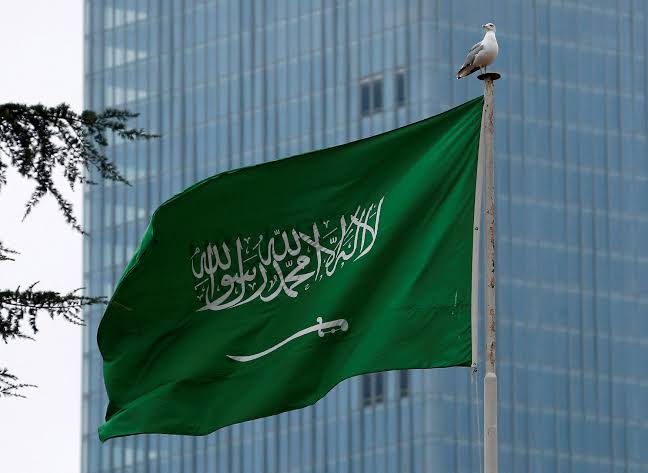
Al-‘Ula: A Historic Oasis and Emerging Tourist Hub in Saudi Arabia
By Mubarak Umar Abubakar
Al-‘Ula, an ancient oasis city nestled in Saudi Arabia’s Medina Province, is a living proof of the region’s rich history and cultural heritage. Once a bustling market town on the route connecting India and the Persian Gulf to the Levant and Europe, Al-‘Ula has been home to various civilisations that shaped its unique character. Today, this extraordinary city is at the heart of Saudi Arabia’s ambitious plans to become a global tourism destination, attracting visitors with its archaeological treasures, stunning landscapes, and visionary development initiatives.
Al-‘Ula’s historical significance dates back thousands of years, with human settlements in the region beginning as early as 5000 BCE during the Bronze Age. Its early prosperity was fueled by its strategic location on trade route, an essential network for transporting luxury goods such as spices, silk, and perfumes across the ancient world. The route connected regions as far-flung as the Kingdom of Aksum in Africa, Arabia, Egypt, and India, making it a vital stop for traders and merchants.
Archaeological evidence from the region points to the existence of several prominent civilisations. Al-‘Ula was once part of the ancient Kingdom of Dedan, and later, the Lihyanite Kingdom, both of which thrived during the first millennium BCE. The oasis city also witnessed the influence of the Nabataeans, a nomadic Arab people known for their architectural achievements, most famously exemplified in Petra, Jordan. Al-‘Ula became a cultural and economic hub in the region, bridging connections between the Arabian Peninsula and the Mediterranean world.
One of the city’s most famous historical landmarks is Hegra, also known as Madā’in Ṣaliḥ. This archaeological site, located just 22 kilometers north of Al-‘Ula, was the first site in Saudi Arabia to be recognised as a UNESCO World Heritage Site. Built more than 2,000 years ago by the Nabataeans, Hegra is often described as the “sister city” to Petra. Like Petra, Hegra is home to monumental rock-cut tombs and other structures that have remained remarkably well-preserved over the centuries. The site, now open to tourists after careful conservation, offers visitors a glimpse into the grandeur of the Nabataean civilisation.
Al-‘Ula owes its existence to the fertile oasis that has sustained human life in this arid region for millennia. The palm groves and natural springs made it an ideal settlement for early civilisations. The old walled city of Al-‘Ula, known locally as Al-Dīrah, still stands as a reminder of the city’s ancient roots. Surrounded by a dense cluster of mud-brick and stone houses, the city’s historic architecture reflects the survival strategies of its inhabitants, who adapted to life in the desert by utilising the region’s resources wisely.
The settlement’s history is marked by the ebb and flow of power among various kingdoms and empires. The Dedanite Kingdom, which ruled the region during the 7th and 6th centuries BCE, is mentioned in ancient texts such as the Harran Stela, a document that describes the conquests of Nabonidus, the last ruler of the Neo-Babylonian Empire. In 552 BCE, Nabonidus launched a military campaign into northern Arabia, capturing key cities like Tayma, Dedan, and Yathrib (now Medina).
After the fall of the Dedanite Kingdom, the Lihyanites took control of Al-‘Ula around the 5th century BCE. The Lihyanite period lasted for nearly four centuries until the Nabataeans rose to prominence in the region. The Nabataeans were eventually conquered by the Roman Empire, which annexed the area into its Arabia Petraea province in 106 CE, further integrating Al-‘Ula into the broader cultural and economic exchanges of the Greco-Roman world.
Al-‘Ula continued to play a vital role during the early Islamic period. As the Islamic empire expanded, the city became part of the Hejaz region, a crucial area in the early history of Islam. In the 7th century, the oasis flourished again as a commercial hub under the Umayyads and Abbasids. Al-Mabiyat, a nearby settlement that thrived from the 7th to the 13th century, emerged as an important trade center. However, the settlement eventually declined, and by the 13th century, Al-‘Ula’s medieval walled city was built using stones from the ruins of the earlier Dedanite and Lihyanite structures.
The city regained prominence in the early 20th century when the Ottoman Empire constructed the Hejaz Railway, linking Damascus to Medina. Al-‘Ula was one of the railway’s major stops, further solidifying its role as a vital link in regional trade routes. The railway station in Al-‘Ula is a reminder of the city’s enduring importance as a transportation hub, even in modern history.
Today, Al-‘Ula is recognised as one of the richest archaeological regions in Saudi Arabia, with a vast array of inscriptions and petroglyphs scattered throughout its surrounding sandstone cliffs. Mount Ikma and Ar-Ruzeiqiah are two key sites for rock art, featuring carvings that depict hunting scenes, humans, animals, and mysterious symbols. These petroglyphs provide insight into the beliefs and daily lives of the region’s ancient inhabitants.
The surrounding of Al-‘Ula, characterised by dramatic canyons, valleys, and rock formations, add to the area’s allure. The contrast between the barren desert and the lush palm-filled oases has made Al-‘Ula a focal point for nature lovers and adventure tourists. One of the most iconic natural landmarks is Jabal AlFil (Elephant Rock), a towering rock formation resembling an elephant, which has become a popular attraction for visitors.
In recent decades, Al-‘Ula has experienced significant growth and transformation. In the 1980s, the city began to modernise with new agricultural and urban developments, drawing in settlers from across the region, including Bedouins and migrant workers. The Saudi government, through the Royal Commission for Al-‘Ula, has set in motion a bold plan to develop the city into a world-class tourism and cultural destination.
In 2018, Saudi Arabia signed a 10-year agreement with France to collaborate on the development of Al-‘Ula. This partnership aims to establish luxury hotels, modern infrastructure, and a world-class museum that will celebrate the region’s art and culture. The Royal Commission has also launched an integrated archaeological survey of the Al-‘Ula valley and beyond, ensuring that the historical sites are preserved while being opened to the public. Several sites, including Hegra, had been closed for conservation but were reopened in 2020 as part of the region’s grand tourism strategy.
A key focus of the development plan is sustainability and the growth of small and medium enterprises (SMEs) in the tourism sector. The Royal Commission, in collaboration with AstroLabs, has been running an SME accelerator program aimed at fostering local businesses and enhancing the tourism ecosystem in Al-‘Ula. This program aligns with Saudi Arabia’s Vision 2030, which seeks to diversify the economy and reduce dependence on oil revenues. Al-‘Ula is projected to attract two million tourists annually and contribute SAR 120 billion to the national GDP by 2030.
With the easing of visa processes for international travelers, Al-‘Ula has become a must-visit destination for tourists seeking both historical and modern experiences. Visitors are drawn to its rich heritage sites, such as the Oasis Heritage Trail, Dadan, Jabal Ikmah, and the Al-‘Ula Old Town. Adventure-seekers explore the surrounding desert through activities such as hiking, rock climbing, stargazing, and dune bashing.
Al-‘Ula’s ambitious plans for the future do not detract from its ancient past. Rather, it seeks to elevate and celebrate the city’s long-standing history, turning it into a beacon of cultural exchange and a symbol of Saudi Arabia’s drive towards modernisation.
In blending the ancient with the new, Al-‘Ula is set to become a premier global destination, offering a unique blend of history, culture, nature, and adventure. It is a city where the past meets the future, inviting the world to rediscover the wonders of the Arabian Peninsula.
